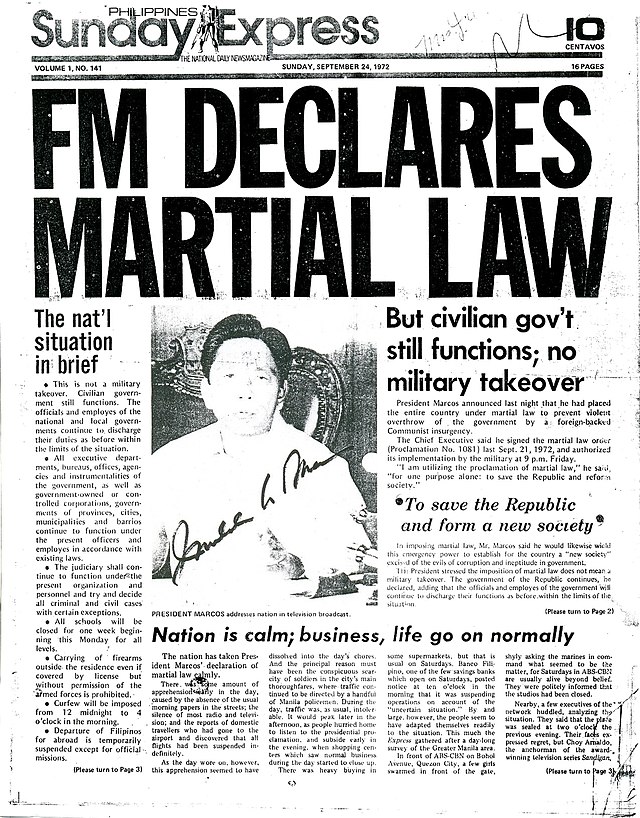The 20-Second Trick For News Articles
The 20-Second Trick For News Articles
Blog Article
The Basic Principles Of News Articles
Table of ContentsSome Known Details About News Articles What Does News Articles Mean?News Articles Fundamentals ExplainedA Biased View of News ArticlesRumored Buzz on News Articles
Great understanding of various topics offers students an one-upmanship over their peers. Also though electronic and social networks are readily accessible, we should not fail to remember how essential it is to read the newspapers. Moms and dads should attempt and inculcate the practice of reading a newspaper as a day-to-day regimen to continue the heritage of the revered print medium.News stories likewise consist of at least one of the adhering to essential features family member to the designated audience: distance, prestige, timeliness, human interest, curiosity, or repercussion.
Within these limits, news stories additionally aim to be comprehensive. Among the bigger and much more highly regarded newspapers, justness and balance is a significant aspect in presenting details.
Papers with a worldwide audience, for instance, have a tendency to use an extra official style of composing. The details options made by a news electrical outlet's editor or editorial board are typically collected in a design overview; common style overviews consist of the and the US News Design Book. The main goals of information writing can be summarized by the ABCs of journalism: accuracy, brevity, and clearness.
Not known Facts About News Articles
As a guideline, journalists will not make use of a long word when a short one will certainly do. News writers try to stay clear of utilizing the exact same word a lot more than once in a paragraph (occasionally called an "resemble" or "word mirror").
Headlines sometimes leave out the topic (e.g., "Jumps From Watercraft, Catches in Wheel") or verb (e.g., "Feline woman lucky"). A subhead (likewise subhed, sub-headline, subheading, caption, deck or dek) can be either a secondary title under the major heading, or the heading of a subsection of the article. It is a heading that comes before the primary message, or a group of paragraphs of the primary text.

Added signboards of any of these types might show up later on in the post (specifically on succeeding web pages) to attract more analysis. Such billboards are likewise utilized as guidelines to the short article in other areas of the magazine or site, or as advertisements for the piece in other magazine or sites. Common framework with title, lead paragraph (recap in strong), other paragraphs (details) and contact information.

Instance of a hard-lead paragraph NASA is suggesting an additional room task. The firm's budget request, announced today, consisted of a strategy to send another objective to the Moon. This time the agency intends to develop a long-lasting center as a jumping-off factor for other space adventures. The spending plan demands about $10 billion for the project.
The NASA news came as the firm asked for $10 billion of appropriations for the job. An "off-lead" is the second crucial front web page news of the day. The off-lead appears either in the leading left edge, or directly listed below the lead on the. To "hide the lead" is to start the post with background information or information of additional value to the visitors, requiring them to find out more deeply this article into an article than they ought to have to in order to uncover the essential points.
Little Known Facts About News Articles.
Typical usage is that a person or two sentences each create their very own paragraph. Journalists usually define the company or structure of a newspaper article as an upside down pyramid. The important and most intriguing elements of a tale are placed at the beginning, with sustaining info following in order of reducing relevance.
It enables people to explore a subject to only the deepness that their curiosity takes them, and without the charge of details or nuances that they could consider pointless, but still making that details readily available to a lot more interested visitors. The upside down pyramid framework also allows articles to be click now trimmed to any approximate size during design, to suit the area available.
Some writers start their tales with the "1-2-3 lead", yet there are several kinds of lead available. This layout inevitably begins with a "5 Ws" opening up paragraph (as described over), followed by an indirect quote that offers to support a significant element of the first paragraph, and afterwards a direct quote to sustain the indirect quote. [] A kicker can describe multiple points: The last tale in the news program; a "satisfied" story to finish the show.
Longer articles, such as magazine cover articles and the items that lead the inside areas of a newspaper, are understood as. Feature stories vary from straight news in a number of methods.
How News Articles can Save You Time, Stress, and Money.
The journalist commonly information interactions with interview subjects, making the item a lot more individual. A feature's first paragraphs often associate a fascinating moment or event, as in an "unscientific lead". From the details of a person or episode, its sight quickly widens to generalizations concerning the tale's topic. The area that indicates what an attribute is about is called the or signboard.

The Editor's Tool kit: A Reference Overview for Beginners and Professionals (2001) Allan M. Siegal and William G. Connolly. The New York City Times Guidebook of Design and Usage: The Official Design Guide Utilized by the Writers and Editors of the World's Most Authoritative Newspaper (2002) M. L. Stein, Susan Paterno, and R.
Report this page